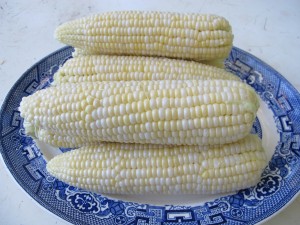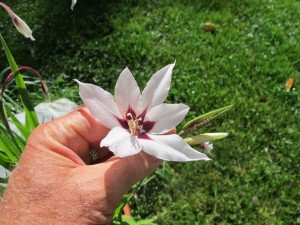Fall Chores
The fall equinox arrives on September 23 this year. On that date, days and nights are of equal length, but with each subsequent day the nights get a little bit longer and we begin our descent into winter. For many gardeners, the shortening days are not welcomed. I try to look at the positive side: we all need a break from weeding and working on our gardens. It’s not time to hang up our tools and put them away, but we can start to slow down.
My vegetable garden did well this year. We had plenty of rain – but lots of sun, too. Often the rain was torrential – which is not ideal – but it most often fell at night, followed by sunny days which were great for growing. I worked a piece of borrowed land this summer, one that had been fallow for a couple of years, and I was not bothered by tomato blights there, so the leaves are still green and the plants producing well.
I grew corn for the first time in more than 20 years and was delighted that the corn did not all get ripe at once; it ripened over a 3 week period. I had plenty to share, which is nice, too. People often say that you can’t grow corn organically – that you need insecticides to kill the corn ear worms and chemical fertilizers to feed the nitrogen-hungry plants. I used neither, and got fat, juicy ears that produced not a single worm. I fertilized with Pro-Gro organic fertilizer at planting time. Period. Too much nitrogen from chemical fertilizers has been shown to attract insects.
I used a lot of hay as mulch this year, and that really helped to keep weeding to a manageable level. Three or four inches of mulch hay around the tomatoes applied early on kept down weeds and provided a nice clean place for fruit, some of which inevitably lands on the ground (despite the cages).
It’s important to clean up and remove diseased plants once they have stopped producing. I like to mix plant carcasses with brush in a pile in the garden where I can burn it all after the snow flies. Insects (and their larvae and eggs) and fungal spores can be effectively destroyed that way. Weeds harboring seeds can go on the pile, too. Weeds with big clusters of seeds should not go in a compost pile that you intend to use anytime soon. Weed seeds can last for years, and composting often does not kill them.
Some of my flower beds are less weedy this year than in the recent past. I’ve realized that I have more flower beds than I can keep up with by myself, so I hired a fellow to help me weed this summer – and he actually knows the difference between a flower and a weed! It was quite liberating. But I need to go over some of the beds he worked on and get out little weeds that have appeared since he cleaned them up. Weed seeds – or scraps of root – are a fact of life, and re-weeding is always necessary. If I get these little weeds now, it will help me have cleaner beds in the spring. It will help, too, if I put down a layer of bark mulch after this weeding.
Each summer I grow colorful plants on my deck, and I dread the onset of cold weather as many of these plants will never be happy inside the house. They just can’t survive the lower light levels indoors. Each fall night that portends frost I scurry back and forth from the deck to the indoors, lugging my favorite plants. I keep them living as long as I can but realize that some will have to be left to succumb to the arriving cold.
A fall chore I do each year without fail is to wash the leaves, top and bottom, of any plant that I bring in from the outside. I do this to wash off aphids and their eggs and larvae. Aphids are well controlled outdoors – there are lots of predator insects that consider them the Ben and Jerry’s of the insect world, consuming them with glee. But indoors? Even a few eggs will soon produce adults that will reproduce and make a mess of my houseplants. So I wash them with a sharp stream of water from the hose, let them dry in the sun, and then bring them indoors for the winter.
A fall chore I often forget to do in time is to dig up and store tender bulbs like gladiolas, dahlias and peacock orchids or sword lilies (Acidanthera spp.). These will not survive our winters and deserve to come indoors to live in a paper bag in a cool spot. This year I resolve to do better. I planted sword lilies in pots and they are blooming beautifully right now, and are delightfully fragrant.
This week I will plant some grass seed. Fall is a good time to fill in dead spots on the lawn. The soil is warmer now than in the spring, and fall rains will make watering less needed. There is still plenty of time for the new grass plants to get established before cold weather. I’ll just scuff up the soil with a short-tined garden rake, spread some seed, and then cover it with a thin layer of mulch. Finally I’ll smooth over the mulch with the back side of a lawn rake to mix in the seed and compress the soil a bit by putting down a board or small square of plywood and stepping on it lightly.
There will still be plenty of summer-like days ahead, but it’s good, I think, to start planning for fall and winter. Before we know it, we’ll be raking up the leaves – and shoveling snow.
Henry Homeyer is a garden designer and consultant, and the author of 5 books. His web site is www.Gardening-Guy.com.




